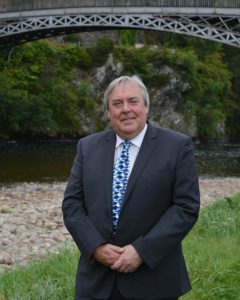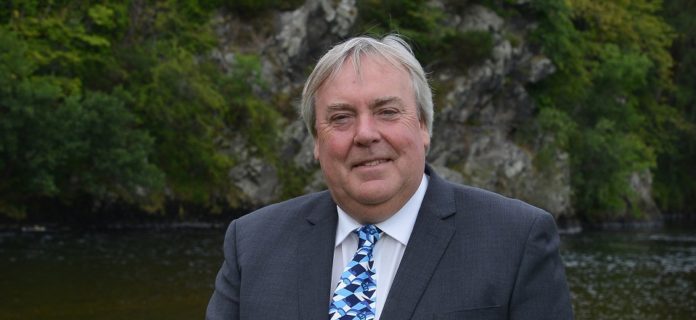Question and Answer Session with Malcolm Roughead, OBE, Chief Executive of VisitScotland.
Malcolm was appointed Chief Executive in September 2010, having served as the Director of Marketing since 2001 and then as acting Chief Executive from June 2010. He is also a Fellow of the Institute of Direct Marketing and a Fellow and former Chair of the Marketing Society in Scotland. He received his OBE for services to tourism in 2005.
Q: In a broad sense how do you see Scottish tourism at this moment in time?
A: I think it’s in a pretty good place. We’ve seen growth for a number of years consistently now. The big catalyst was 2014 and the challenge has been to build on that and what we are now seeing in economic terms is huge, with tourism worth £12bn to Scotland, around 5% of GDP. It brings a lot of new money into the economy. A lot of this success has been driven by work that has gone on over the years.
Greater access into Scotland is, of course, key with around 150 new routes over the last few years. A huge amount of investment in infrastructure has been pivotal too, with the likes of the revamped Kelvingrove, expanded National Museum of Scotland in Edinburgh, which has reported record visitor numbers, and the game changer of the V&A in Dundee. Dundee is a good example of how investment in tourism can create growth in the retail and hotel proposition and nightime offer. There have been a flurry of investments across the country and one sector I’d like to flag up is the growth in the cruise market, which has risen exponentially. This has helped bring money into fragile communities.

Q: How does growth look going forward?
A: Conditions for future growth are actually pretty good, but it’s very important that we don’t get complacent and continue to work together across all the private and public sectors. We also need to keep up the quality of what we offer and the customer experience in what is a really competitive world when it comes to tourism destinations.
Q: How do you see Scotland appealing to the next generation of tech savvy travellers?
A: Scotland generally speaking appeals to a new generation of travellers, partly for its history and culture, but also partly due to its authenticity. That sense of being somewhere real, offering a real experience. They like that what you see is what you get and that there is a down to earthiness of the product and the people.
Q: With success the media has raised some issues of too many tourists at pressure points on the likes of the Isle of Skye. How do you see this situation and what can be done to deal with it?
A: There have been some well-documented pinch points. It’s a good issue in some ways to have to address, as it is a symptom of success, but how do we mitigate against that? Well, we are trying to develop seasonal spread and geographic spread too to disperse tourism more evenly. Also pragmatically we are looking at issues with local communities, sitting down and talking to them. An example of this is with the Skye problems around parking at the Fairy Pools and the Quiraing. We’ve helped put in place a Rural Tourism Development Fund, which has £6m managed by ourselves in conjunction with other bodies to deliver local solutions. And we constantly look at how we can we identify pressure points and make sure we mitigate their impact.
Q: What about the NC500, which the media have also raised questions about?
A: The NC500 driving route is another popular tourism attraction that has been flagged up. We have to look at its issues, while also bearing in mind its phenomenal success as it has brought £8m into the economy in the regions it passes through, with new businesses flourishing and old business able to reinvest. Attractions like the NC500 are seeing new money being invested in Scotland from outside the country.
Q: The dedicated theme years have had a lot of attention and perhaps mixed success. How do you see these going forward?
A: First let me correct you on that. People tend to judge some years against the huge Homecoming 2014. Its success grew directly out of the preceding years from the original Homecoming 2007 right through. The theme years have been gathering momentum. Each year we learn how to do things better with the collaborative effort gelling and improving over the years. The difference in 2014 is that is was a much wider phenomenon with the Ryder Cup, Glasgow Commonwealth Games and Referendum. The world’s eye was on Scotland and we just don’t have that every year. But in 2015 you have to remember we still had seven world championships and a big boost to conference business, just not the global celebrity events. We are in danger of taking for granted what we have, like the Edinburgh Festivals every year that other countries would kill for.
Q: How do see the success and focus of this year’s Year of Young People?
A: The Year of Young People is not just about events. It is being picked up across the spectrum, with everyone bringing to the fore the dilemmas of multiple generations living together and working in a workforce together. It’s asking questions about how we work together and understand each other. I’ve seen that here at VisitScotland myself. I have a 17 year old who shadows me, bringing benefits to both of us as his questions and input come from a completely different perspective. It’s challenging and interesting for us all. The key is not that we drop young people at the end of this year, but have to take forward what we’ve learned into workforce planning and developing the careers of young people.
Q: Which markets today are key to Scotland?
A: No one country can be strong in every market, so we have to prioritise and look at where the growth is going to come from. The beauty of tourism is that you can get a return overnight. It’s also long term. Take China, where you can see the decade or so investment in things like the ‘China Ready’ programme bearing fruit now. The new air route to Chine is huge news too. Germany, France and America continue to grow too and are very strong, while we are also seeing strong growth in Australia with the strength of the Australian dollar.
Q: How important is the domestic UK market?
A: Quite simply the UK is the backbone of Scottish tourism and something we never take for granted. We have to work hard to continue its strength and we are committed to that.
Q: What advice would you give to Small and Medium-Sized Enterprises going forward in Scotland today?
A: To my mind SMEs are absolutely crucial as they make up around 90% of Scottish industry. A thriving SME sector is going to be a thriving Scottish tourism sector. There is a lot of support out there for them if they need it. This can be business advice, it can be digital capability. I would encourage them to take up the opportunities that exist – there are some brilliant programmes that the enterprise companies offer like Digital Tourism Scotland Initiative. This caters for businesses who are absolute beginners, through to advance courses. Given that 90% of people go online today to plan their travels I would encourage people to be visible online and use the resources to help them be more visible, www.visitscotland.com. Given that 65% people also book online have to be online transactable. If they all do the digital basics right I would expect to see further growth in this sector.
Also on InsiderScotland:
As the dad of two wee girls who travels ...
Flybe, Europe’s largest regional airline...
The word 'hoodie' can have some negative...
It’s fitting that design led boutique br...
I have to be honest. I am not always a f...
Situated in the heart of Scotland's newe...









